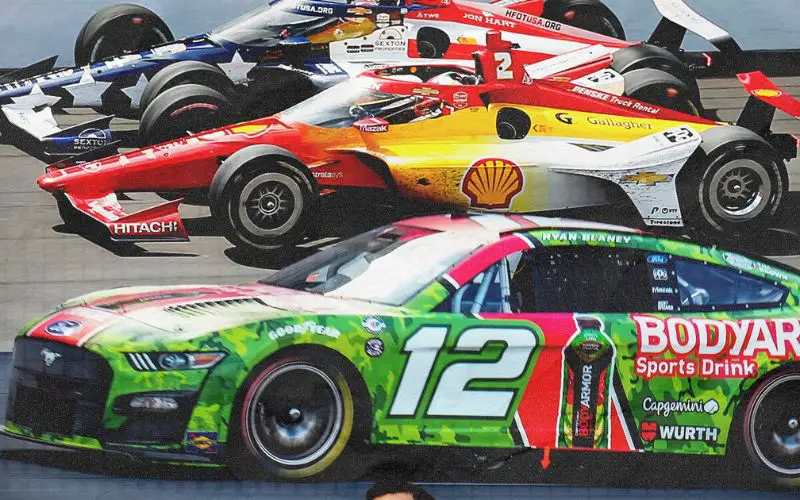Auto racing is a thrilling and competitive sport that captivates audiences around the world. Two of the most prestigious and popular racing series are IndyCar and Formula 1. While both involve high-speed cars and talented drivers, there are several key differences between the two.
Overview of IndyCar Racing
IndyCar, short for “Indy Racing League,” is a premier open-wheel racing series based in the United States. The series is best known for the iconic Indianapolis 500, a 500-mile race held annually at the Indianapolis Motor Speedway.
IndyCar cars are single-seat, open-cockpit vehicles with exposed wheels, and the series includes a mix of oval and road course races.
Overview of Formula 1 Racing
Formula 1, often referred to as F1 is a globally recognized racing series that features the most advanced and technologically sophisticated race cars. The series holds events in various countries across the globe and is known for its rich history and passionate fan base.
Formula 1 cars are also single-seat, open-wheel machines, with a significant emphasis on aerodynamics and engineering excellence. The races primarily take place on road courses and street circuits.
Key Differences between IndyCar and Formula One

While both IndyCar and Formula 1 are top-tier racing series, several distinct differences set them apart. Let’s delve into some of the key variations between the two:
Technical Specifications
One of the fundamental differences between the two series lies in the technical specifications of the cars. Formula 1 cars are known for their cutting-edge technology and aerodynamic design, featuring advanced hybrid power units and highly sophisticated engineering.
In contrast, IndyCar vehicles are slightly larger and heavier, with less emphasis on intricate aerodynamics and hybrid powertrains.
Types Of Circuits
Another notable difference is the types of circuits on which the races are held. While both series incorporate a mix of oval and road course events, the nature of the tracks differs.
IndyCar’s oval races feature high-speed, banked turns, demanding a different driving style compared to the winding road and street circuits that are synonymous with Formula 1 racing.
Global Reach And Popularity
Formula 1 enjoys a more extensive global reach and a larger international following compared to IndyCar. With races held in diverse locations across Europe, Asia, the Americas, and the Middle East, Formula 1 has a broader appeal on the world stage.
In contrast, IndyCar’s events are primarily concentrated in the United States, with a smaller international presence.
Team Structures And Driver Contracts
The organizational and team structures within each series also differ. Formula 1 teams tend to have larger budgets and more extensive technical staff, given the high level of engineering and resources required to compete in the series.
Additionally, the contractual arrangements for drivers in Formula 1 often involve significant financial investments and multi-year agreements. On the other hand, IndyCar teams typically operate with smaller budgets and leaner staff, and driver contracts may be more flexible and variable depending on sponsorship and performance.
Event Formats And Race Length
The formats of racing events in each series vary as well. Formula 1 race weekends typically consist of multiple practice sessions, qualifying sessions, and a single main race on Sunday, with the race distance typically ranging from 300 to 400 kilometers.
In contrast, IndyCar race weekends may include multiple races across the span of a few days, with varying race lengths and formats, such as timed races on road courses and longer endurance events on ovals.
Similarities between IndyCar and Formula 1
Despite the aforementioned differences, there are also similarities between IndyCar and Formula 1 that highlight the shared appeal of top-tier open-wheel racing. Some commonalities include:
- High-performance, single-seat race cars with advanced technology
- Talented and skilled drivers from around the world
- A focus on speed, precision, and strategic racecraft
- A passionate fan base and global media coverage
In summary, IndyCar and Formula 1 represent two distinct yet enthralling branches of open-wheel auto racing. Both series showcases the pinnacle of automotive engineering and driving skills, captivating audiences with high-speed duels and intense competition.
Whether it’s the legendary history of Formula 1 or the adrenaline-pumping spectacle of IndyCar, there’s no shortage of excitement and drama in the world of top-level motorsport.
This article provides detailed information about the difference between IndyCar and Formula 1 racing. The comparison covers technical specifications, types of circuits, global reach and popularity, team structures, driver contracts, event formats, and race length.
Additionally, it highlights the shared similarities between the two racing series, showcasing their appeal to racing enthusiasts worldwide.